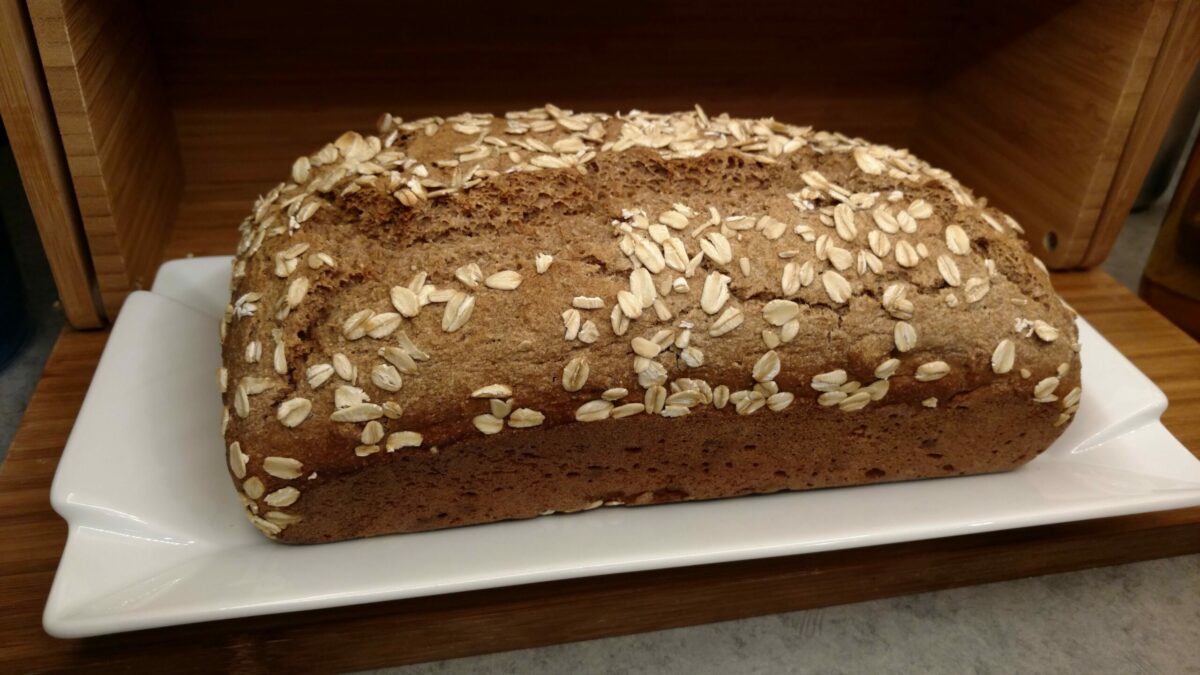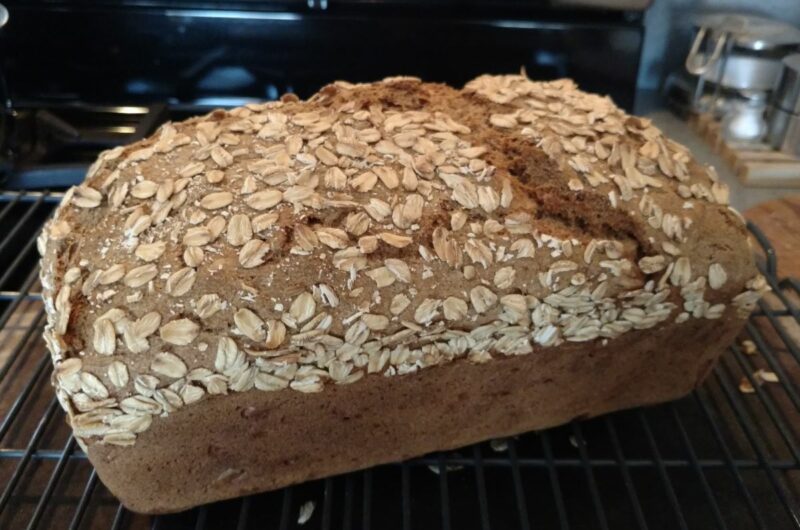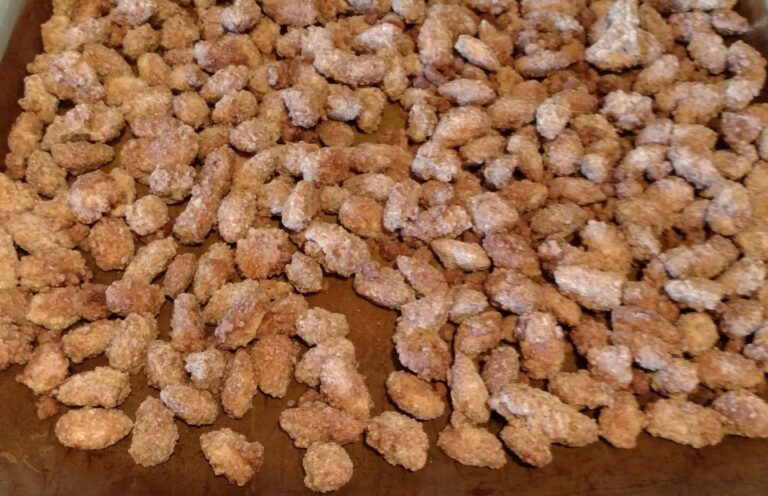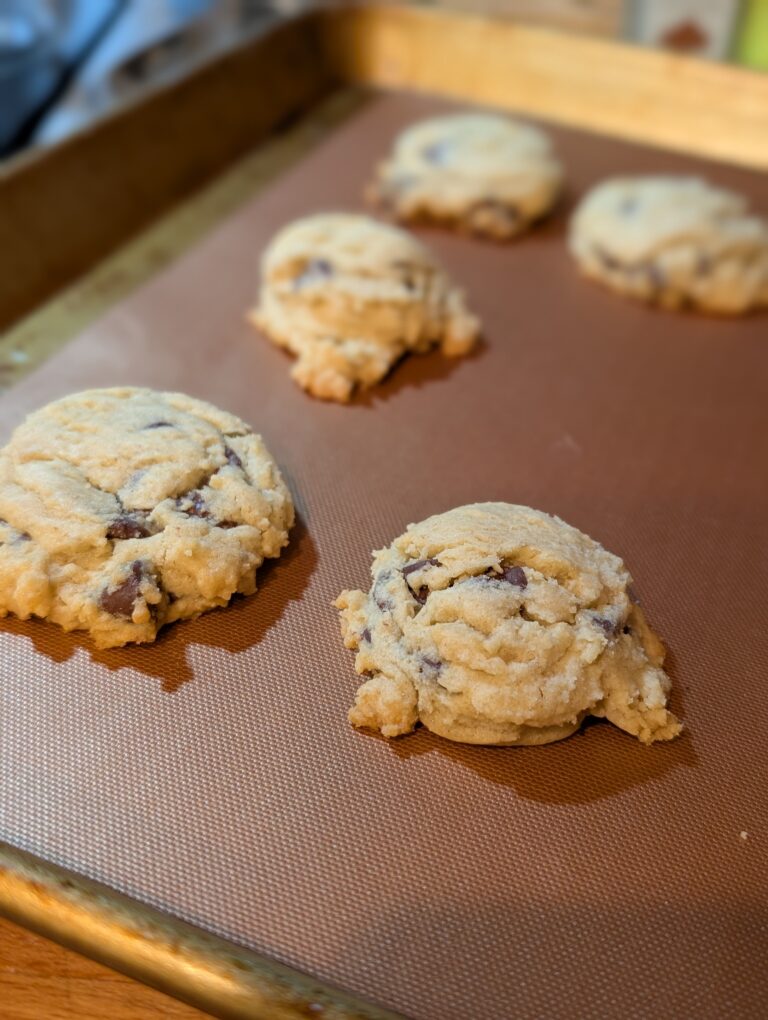Rye Bread (Roggenbrot) – no knead, no rise, no sourdough
If you’re looking for a simple, hearty homemade bread, this No-Knead, No-Rise Rye Bread (Roggenbrot) is about to become your new favorite. No need for a stand mixer, no messy kneading, and no waiting around for the dough to rise. Thanks to its high hydration level (about 50%), the dough is loose and wet — you simply pour it into a lined loaf tin and bake!
This recipe works with any type of flour, but it’s best when you use a mix that includes rye and whole wheat flours. Rye flour is especially great for bread because it helps retain moisture, keeping your loaf fresh and tender for days.
The dough is made with just a handful of pantry staples: flour, water, yeast, salt, and a touch of balsamic vinegar. Why vinegar? A small amount of vinegar helps strengthen the dough’s structure, improves the final texture, and gives the bread better keeping quality. It also subtly enhances the flavor without making the loaf taste sour.
Feel free to add extras like seeds, oats, or spices to customize your loaf. Whether you’re a first-time baker or just want an easy, reliable bread recipe, this rye bread is wholesome, forgiving, and absolutely delicious.
German-Style No-Knead Rye Bread (Roggenbrot) – Simple and Delicious
Course: BreadCuisine: GermanDifficulty: Easy12
servings15
minutes1
hour5
minutes160-180
kcalA simple, hearty no-knead, no-rise Rye Bread (Roggenbrot) made with a mix of rye and whole wheat flours. Just mix, pour, and bake — no special equipment needed!
Ingredients
600 ml warm water (not hot, to protect the yeast)
600 g flour (half rye, half whole wheat recommended)
15–25 g salt (adjust to taste)
1 tablespoon instant yeast
1 splash balsamic vinegar
Optional: sunflower seeds, pumpkin seeds, poppy seeds, rolled oats for topping or mixing in
Directions
- In a large bowl, combine the warm water, yeast, and balsamic vinegar. Stir briefly.
- Add the flour and salt to the bowl. Mix everything together until a loose, sticky dough forms.
- Fold in any optional seeds or oats, if using.
- Line a loaf pan with parchment paper. Pour the dough into the pan and smooth the top slightly.
- Sprinkle additional oats or seeds on top, if desired. You do not need to score the bread—it is too wet and will naturally crack as it bakes.
- Place the loaf into a cold oven. Set the oven to 430°F (220°C) on the convection setting and bake for about 60–65 minutes. If your oven does not have a convection option, increase the temperature by 20°F (about 10°C) to ensure an even bake.
- The bread is done when it sounds hollow when tapped and has a firm crust. Remove from pan and cool on a wire rack before slicing.
Notes
- A Forgiving Recipe: This dough is very flexible — no need to stress! Just aim to keep the balance between the mass of water and flour roughly even for the best texture.
Use Rye for Best Flavor: While you can mix and match different flours, using rye flour gives the bread a richer, deeper flavor and helps the loaf stay moist longer.
Baking Tips: You can bake this bread in a closed bread baker (like a Dutch oven) for an even crustier result. Simply remove the lid after about 40 minutes to allow the top to brown during the final 20 minutes.
Enhance with a Baking Stone: Adding a preheated baking stone to your oven helps create a more even heat, improving the oven spring and crust of your bread.
Optional Add-Ins: Feel free to mix sunflower seeds, pumpkin seeds, poppy seeds, or rolled oats into the dough or sprinkle them on top before baking for extra texture and flavor.





